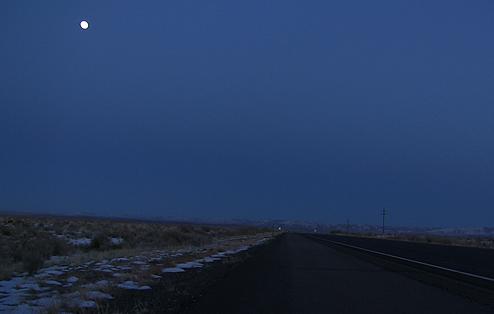Teamwork
Makes a Difficult Job Easier
— Louis St. Germaine, Navajo Nation
Louis St. Germaine, a long-time criminal
investigator for the Navajo Nation, has worked closely with FBI agents over the
years and recalls the surprise many of them express when first coming to Indian
Country.
“Sometimes agents expect to see street
numbers and paved roads,” said St. Germaine, who was born and raised on the
reservation. “Out here, you make one wrong turn at an isolated place and go a
few hundred feet and you can get very lost very quickly.”
“And when the sun goes down,” said
Malcolm Leslie, another Navajo criminal investigator, “in some places on the
reservation you can’t see your hand in front of your face.”
From the most basic task of finding a
crime scene to more complicated matters regarding language and cultural
barriers, FBI agents in Indian Country depend on their local, federal, and
tribal law enforcement partners. And our partners rely equally on us—for
expertise, training, and other resources.
“I don’t think one can do without the
other,” said St. Germaine. “Navajo Nation investigators—we’ve been here a long
time. We are familiar with the area, the crimes, and the people. The FBI is
well skilled in doing investigations. So we combine our talents, and it works
well.”
St. Germaine was one of the original
members of the first Safe Trails Task Force, which the FBI created in 1994 on
the Navajo Reservation and has since expanded to 15 locations around the
country. The idea is to unite the Bureau with other federal, local, and tribal
law enforcement agencies to combat Indian Country crime.
Through the task force and other
initiatives, the FBI provides invaluable training and equipment to tribal law
enforcement. “It has helped us do our job,” St. Germaine said. “We are
challenged financially on the Navajo Nation. The FBI supplies us with vehicles
and other equipment. Without that contribution,” he added, “I think we would be
in real serious trouble.”
“And without our tribal partners,” said
Special Agent Lenny Johns, who supervises our Santa Fe Resident Agency, “it
would be virtually impossible for the Bureau to accomplish its mission in
Indian Country. Many times it’s just one FBI agent on the reservation dealing
with a complex crime scene. The tribal criminal investigators and evidence
technicians are critical to the process of conducting interviews and collecting
evidence. Without them, we’d get very little traction.”
“The FBI brings resources that we’re in
dire need of,” added veteran criminal investigator Leslie. “But they also bring
knowledge.” Leslie has received a variety of FBI training, both in the
classroom and on the job at crime scenes.
“The partnership is great,” Becenti
said. “ERT out of Albuquerque is where I’ve gotten most of my training. Without
them, I wouldn’t be where I am today as far as my skill level. And they also
provide equipment—evidence collection supplies and whatever else I need to help
get the job done.”
Becenti was recently presented with an
FBI Director’s Certificate for his many years of helping ERT process crime
scenes on the Navajo reservation. “When you work alongside someone for 12
straight hours on a homicide scene in freezing fog and sub-zero temperatures,”
he said, “it builds mutual trust and respect.”
Teamwork
Through Coordination
The Indian Country Unit at FBI
Headquarters in Washington is charged with coordinating the Bureau’s
investigative efforts and responsibilities on native lands across the country.
“Our mission is to develop and implement
strategies to address the most serious crimes in Indian Country and to support
our joint efforts with the Bureau of Indian Affairs and tribal law
enforcement,” said Special Agent Michelle Gruzs, chief of the unit. “We also
manage the Safe Trails Task Force program, which supports a variety of training
opportunities throughout Indian Country.
The unit has the additional
responsibility of implementing portions of the federal Tribal Law and Order
Act. The 2010 law, designed to give tribal law enforcement greater control to
fight crime in their local areas, also requires federal agencies working in
Indian Country to report statistical information to Congress on an annual
basis.
“We’re making progress on the
reservations because we have strong partnerships at the local, tribal, and
federal level,” said Gruzs, a former Indian Country investigator. “It’s all
about working together.”
Next:
A zero tolerance approach.







No comments:
Post a Comment